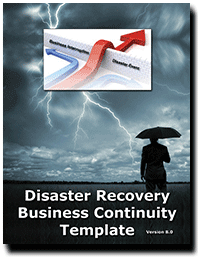The choice of business continuity exercise test conditions is an important factor in its success, but how do you go about deciding what you should focus on?
Start by determining the top risks for your organization but avoid being influenced by external hype and scare-stories.
For example, in the middle of flu season, it is likely that some people might suggest that an appropriate exercise would simulate a response to an increasing number of influenza cases among workers which escalates into a workforce shortage. I am reminded of the intense focus on pandemic planning during the mid-2000s when there was significant attention given to a strain of avian influenza which rarely is transmitted to humans becoming much more easily transmitted to people and setting off a pandemic; or, the H2N1 (Swine Flu) pandemic of 2009 which drove the World Health Organization to create a lot of anxiety when it raised its pandemic alert level for the first time to phase 5, meaning that a full pandemic was considered imminent. While both are still very much risks today, they became subject to high-levels of media attention but then quickly subsided when the media found something more interesting to follow.
Simple scenarios that have no direct correlation to the risks that concern management only serve to produce superficial exercises that do little to further the development of a business continuity plan and are likely to reduce the value of business continuity management in the organization.


